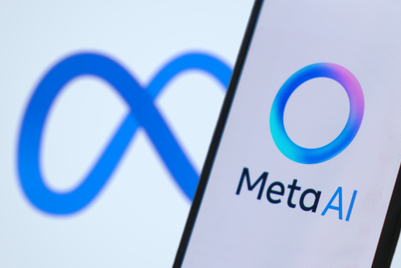.jpg&h=570&w=855&q=100&v=20250320&c=1)
Сonstantly juggling campaigns across multiple channels while navigating walled gardens, media buyers are now expected to switch from admin to creative and strategy tasks in the blink of an eye. There's nothing simpler, right?
The truth is, media buying can be a stressful and admin-heavy position. These constant task shifts stem from limited resources, whether that’s staff, budget, or time. That might not be the case for the largest businesses, but for most, it’s a fact of life.
Does that mean the brands those buyers work for should just accept they aren’t going to compete with the biggest players? What if there was a way of leveling the playing field? There could be a way of freeing up time, staff, and budget to allow media buyers to focus on the right tasks, while still delivering fantastic results.
The impact of context switching
Ironically, it is the demands of the job that are getting in the way of media buyers doing their best work. One minute they’re switching Facebook ads on and off so that they’re not spending budget when their audiences aren’t online; the next they’re coming up with new campaigns using different platforms.
The need to deliver manual administration, strategy, and creativity nearly simultaneously is holding them back and potentially, increasing the chances of mistakes being made.
This context-switching has a detrimental effect on productivity: research shows it takes nearly 25 minutes to refocus after an interruption. What’s more, even brief disturbances can double the chance of errors.
What’s the solution? The obvious answer is to remove tasks, freeing up time and reducing distractions. But who are we kidding?
That's why there is an overall trend of marketing teams turning to technology to help them do more with less. I believe many of you have already been experimenting with how machine learning and AI can strengthen your efforts, help work quickly and deliver impactful growth.
What should be automated
This isn’t a pitch to replace everyone with machines. Most available artificial intelligence (AI) and machine learning (ML) tools cannot currently perform cognitive tasks at the level humans can. Most of these solutions use available data to provide suggestions, which is useful, but requires additional support to turn those outputs into something truly differentiated.
AI and ML can help by taking repetitive tasks and automating them. This is work that is necessary but time-intensive, most likely administrative in nature.
Take for example, Facebook ads: within the system, there’s no way of dictating when ads should and shouldn’t run; the default setting is on. Very few companies want their ads running all the time as very few have the budgets to sustain that sort of campaign.
That means people have to go in and manually switch campaigns off, and then switch them back on again at the right time. That might only take a couple of minutes, but if you’re running multiple campaigns, that all adds up to a significant portion of the working week spent on one task. So, if that can be automated in some way, then that’s time the team can dedicate to something else.
That’s what automation delivers: time. Depending on the business, that might mean being able to achieve more with the same resources, or it might mean being able to give teams the space to come up with exceptional strategies underpinned by supercharged creativity.
Don’t automate everything
Not everything can, or should, be fully automated. Take ROI, something everyone is focused on. But should a machine keep running all ads that are displaying positive ROI? That will very much depend not just on campaign objectives, but on business goals.
What a good ROI looks like may vary as business requirements shift, and that’s where people need to be involved. Not having to constantly manage ads allows people to focus on the strategy, and from there they can redirect the automation tool to reflect new goals.
Another reason why people still need to be involved is when there is an issue. Automation tools break, just like everything else. Having someone on hand to step in and reset what the solution needs to be doing is critical. Otherwise, brands could be left with malfunctioning campaign management that allows their ads to run continuously, or not at all, and no-one realises until they check the results.
A trusted source of data
This automation requires data. Getting hold of data isn’t an issue; we’re all operating in a world of data overload. What is a problem is being able to trust the data.
One option is to have a single source of truth, one that has all the data brands need and can connect with their automation tools. In that way, they can set rules to adjust which data gets sent, influencing how those AI and ML models behave when managing campaigns.
Data ownership is the next major question here. Take for example, Google Analytics reports: this is a source of data, but can you get access to data behind the reports? For most users the answer is clearly no. Owning raw performance data still seems like a gimmick, but the rise of AI is going to make real data ownership a very pressing concern.
Automation can help by removing repetitive jobs and giving people more time to focus on the other parts of media buying that need deeper, uninterrupted thinking. It’s not a solution to all problems, but when deployed with the appropriate oversight and using accurate and owned data, automation can help media buyers deliver better results.
Vladyslav Zhovtenko is the CEO and co-founder of RedTrack – an AI-driven analytics and automation platform for media buyers.

The piece was first published in Campaign's sister title Performance Marketing World.





.jpg&h=334&w=500&q=100&v=20250320&c=1)
.jpg&h=334&w=500&q=100&v=20250320&c=1)



.jpg&h=334&w=500&q=100&v=20250320&c=1)
.png&h=334&w=500&q=100&v=20250320&c=1)





.jpg&h=268&w=401&q=100&v=20250320&c=1)


